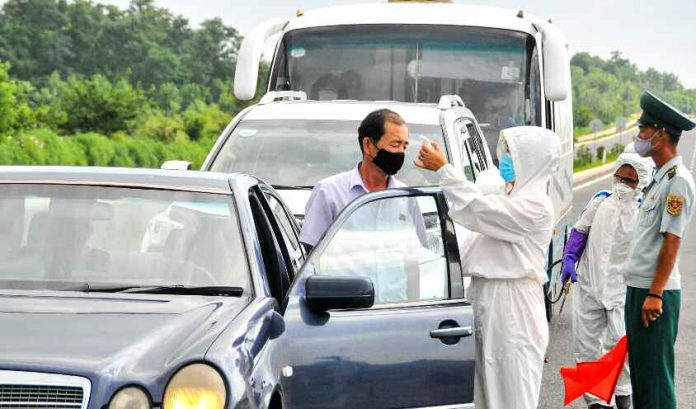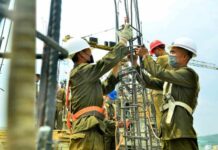
In March, North Korean authorities ordered PCR tests for 10,000 people in six major areas, including Pyongyang, Daily NK has learned.
Daily NK recently obtained a written order issued in early March by North Korea’s State Emergency Epidemic Prevention Headquarters to regional emergency quarantine divisions.
The order’s recipients were the emergency quarantine divisions in Pyongyang, North Pyongan Province, Kangwon Province, North Hamgyong Province, Nampo and Kaesong. The document is entitled: “Concerning the Responsibility For and Organization of Public PCR tests and Clinical Epidemiological Surveys.”
The document states that “to take leading and preemptive quarantine measures based on scientific analysis of the current quarantine situation, we must carry out PCR tests and clinical epidemiological surveys of people in the selected regions.”
The order called for the testing of 5,000 people in Pyongyang, 1,000 people in North Pyongan Province, 1,000 people in Kangwon Province, 1,000 people in North Hamgyong Province, 1,000 people in Nampo, and 1,000 people in Kaesong.
The State Emergency Epidemic Prevention Headquarters called for a total of four tests on the same individuals in the evenings of Mar. 4, 7, 10 and 13, with the tests carried out at designated PCR tests sites in each region.
The designated test sites named in the document were the PCR test site in Soryong 2-dong in Pyongyang’s Taedonggang District, the PCR test site in Sinuiju’s Chongnyong District in North Pyongan Province, the PCR test site in Munchon, Kangwon Province, the PCR test site in Chongjin, North Hamgyong Province, and the PCR test site in Nampo’s Chollima District. Information on Kaesong’s test site was omitted.
The order instructed officials the list of people whose samples were taken be reported up the line in a set format with 22 items: personal information such as name, sex, height, weight, occupation and the date they got sick, as well as symptoms, medications and complications. There were also instructions for everyone with coughs, phlegm and other symptoms be surveyed and recorded, even if they have no fever.
The document ordered clinical epidemiological surveys to be reported as Excel and Word files two days after the PCR tests on Mar. 6, 9, 12 and 15. On the last reporting day, Mar. 15, the recorded data on each individual was to be compiled and delivered to the headquarters.
As for who would carry out the clinical epidemiological surveys, the order called for the creation of survey teams led by quarantine and health officials from disease prevention control centers and provincial, city and county hospitals with the participation of unit medical personnel. Specifically, the order stated that “relevant emergency quarantine divisions and regiments must bring together capable quarantine and medical personnel in the survey teams.”
MESSAGE TO OFFICIALS: DON’T WRITE UP FALSE REPORTS
The order also called on officials to ensure that “thorough measures be taken to prevent deviations that fail to ensure survey accuracy, such as writing false reports.”
The orders also specified measures the investigators should take to prevent being infected themselves: “You must close off the transmission space and ensure the accuracy of tests. Wear personal protection gear per regulations including protective suits, face shields and double masks, and thoroughly disinfect your hands after each and every sample collection “Carry out surveys of people who test positive in the PCR tests using non-contact methods or by thoroughly wearing your personal protection gear. Survey personnel must avoid being infected at all costs.”
The document also included a survey section for aftereffects. Item 11 on the aftereffects survey section reads: “Date when unusual symptoms appeared between September and December. Item 18 reads: “Date past the malicious infection disease from last May to July.” The aftereffects survey may be aimed at analyzing the situation after North Korea officially declared an end to COVID-19.
North Korea made its first official announcement of a local outbreak of COVID-19 on May 12 of last year. The government released daily statistics on fever patients, and when no more fever patients appeared in August, it declared victory in its quarantine war against COVID-19.
Translated by David Black. Edited by Robert Lauler.
Daily NK works with a network of reporting partners who live inside North Korea and China. Their identities remain anonymous due to security concerns. More information about Daily NK’s reporting partner network and information gathering activities can be found on our FAQ page here.
Please direct any comments or questions about this article to dailynkenglish@uni-media.net.

















